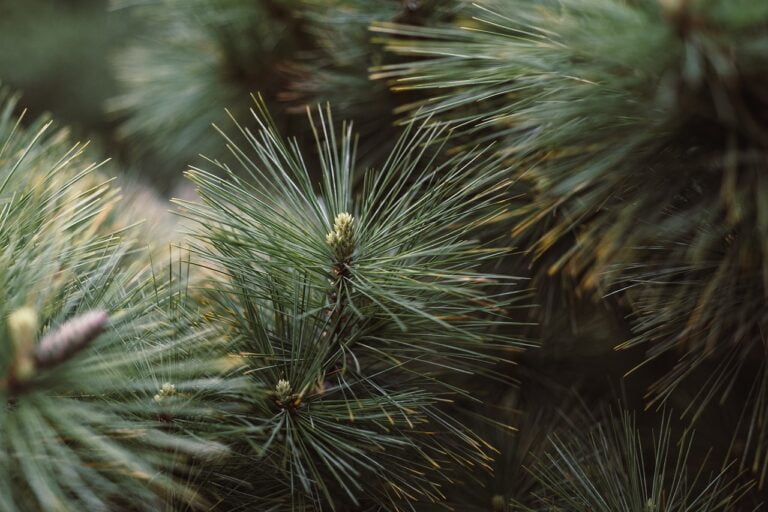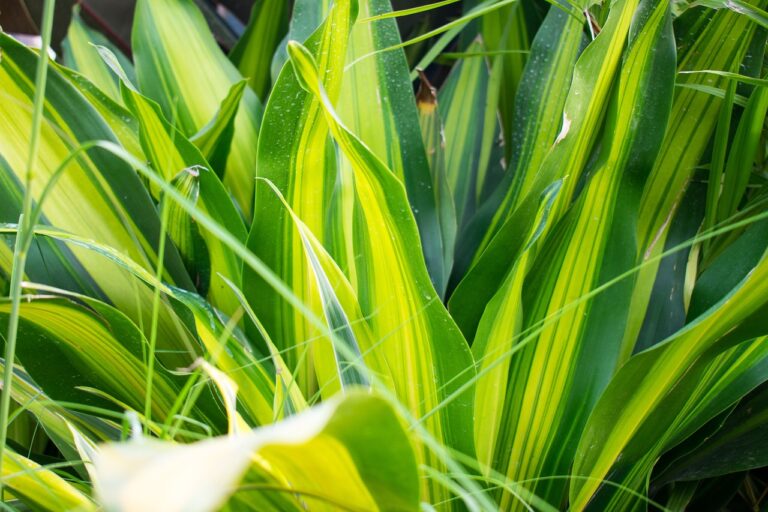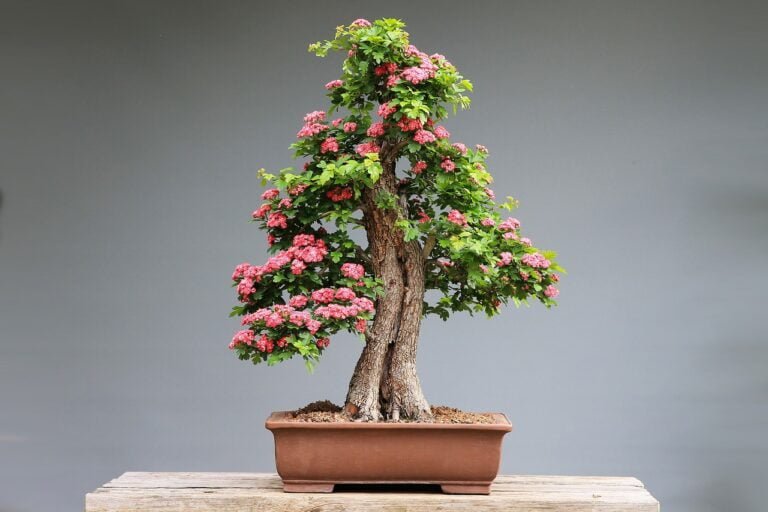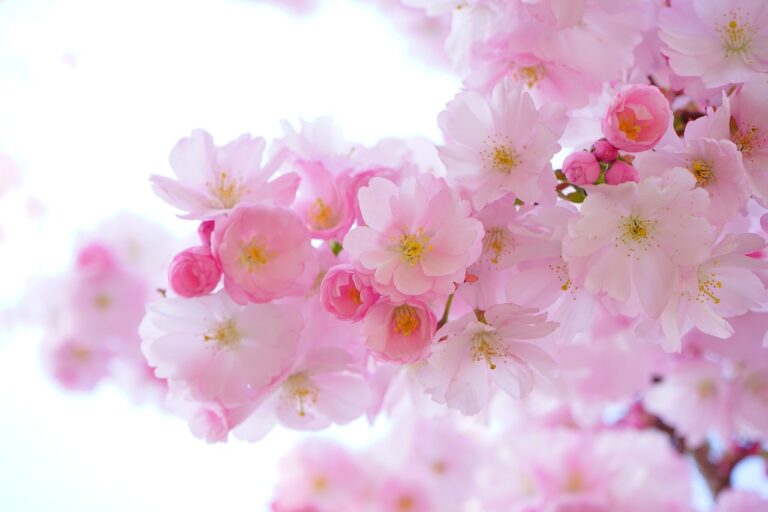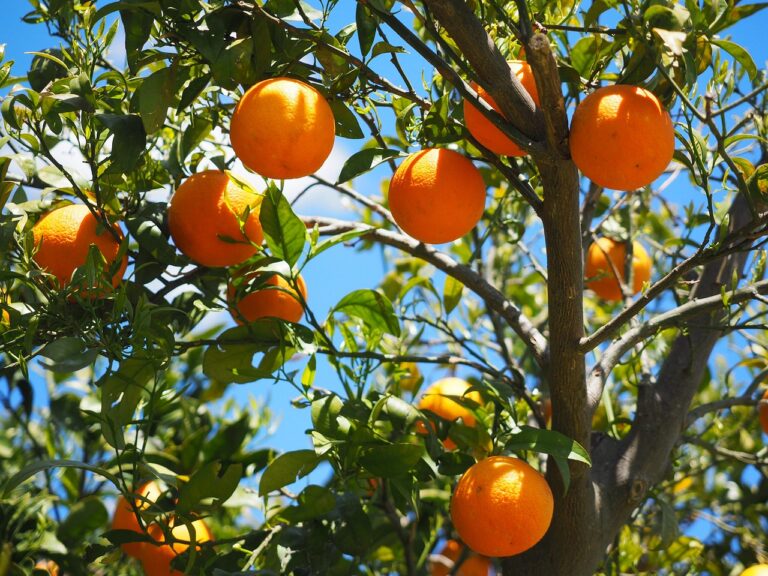Exploring Low-Maintenance Ground Cover Options for Erosion Control
Exploring low-maintenance ground cover options for erosion control? Choose plants with deep roots that stabilize soil, prevent runoff, and need minimum upkeep for effective erosion prevention. Shade-tolerant options like Pachysandra and Vinca work well in shady areas, offering colorful blooms and dense coverage. For sunny spots, consider drought-resistant plants like Gro-low Sumac and Creeping Juniper, promoting sustainable landscaping. Bugleweed and Creeping Juniper, with their deep roots, stabilize soil effectively. Remember, deeper root growth boosts stability. Plant correctly, water deeply, mulch, and select suitable varieties for best results. Improve your landscape aesthetically and practically with low-maintenance ground covers.
Benefits of Low-Maintenance Ground Covers
Low-maintenance ground covers offer a vital solution for individuals seeking effective erosion control with minimal upkeep requirements. These plants play an important role in stabilizing soil, preventing runoff, and minimizing weed encroachment. By establishing a dense root system, low-maintenance ground covers help hold the soil in place, reducing the risk of erosion caused by water or wind. This not only safeguards the integrity of the soil but also maintains its fertility for best plant growth.
One of the key advantages of low-maintenance ground covers is their adaptability to various soil types and environmental conditions. Whether in sunny or shaded areas, these plants can thrive and provide consistent coverage throughout the year. This not only enriches the aesthetic appeal of the landscape but also guarantees continuous erosion control benefits. By requiring minimal maintenance, these ground covers save both time and resources, making them a cost-effective solution for erosion-prone areas.
Incorporating low-maintenance ground covers into landscaping not only beautifies outdoor spaces but also serves as a practical erosion control measure. Their ability to thrive in diverse conditions while offering year-round coverage makes them a valuable asset in preserving soil health and preventing erosion. By choosing low-maintenance options, individuals can achieve effective erosion control without compromising on the visual appeal of their landscapes.
Shade-Tolerant Plant Options
Shade-tolerant ground cover plants are important for areas with limited sunlight. When planting in shade, it is vital to choose species like Pachysandra and Vinca that thrive in low-light conditions. Maintaining adequate moisture levels is critical to ensuring the success of these shade-tolerant plants in erosion control efforts.
Planting in Shade
What are some suitable ground cover options for shaded areas to aid in erosion control? Shade-tolerant plants like Pachysandra, Vinca, Sweet Woodruff, Ajuga, and Lamium are excellent choices. These plants not only thrive in shaded environments but also offer colorful blooms and variegated foliage, enhancing the visual appeal of the landscape. Additionally, species such as Hostas, Wild Ginger, and Lily of the Valley provide dense coverage, further aiding in erosion control. By selecting these shade-tolerant ground covers, you can effectively address erosion issues in areas with limited sunlight exposure. Consider planting a variety of these species to create a beautiful and functional solution for erosion control in shaded areas.
Maintaining Moisture Levels
How do shade-tolerant ground cover plants contribute to moisture maintenance in shaded areas? Shade-tolerant plants like Pachysandra and Vinca excel in low-light environments, aiding in moisture regulation. These plants not only improve visual appeal but also help control erosion. Species such as Sweet Woodruff and Ajuga are effective choices for erosion control in shady spots, with spreading stolons for efficient coverage. Cold-hardy and adaptable, Vinca offers succulent qualities while Ajuga presents colorful blooms. Wild Ginger and Lily of the Valley, other shade-loving options, provide red or white flowers, respectively, adding aesthetic value in addition to addressing moisture retention needs in shaded landscapes. Opting for shade-tolerant ground cover plants creates lush and low-maintenance solutions for moisture regulation in shaded areas.
Sun-Loving Ground Cover Choices
When considering sun-worshiping ground cover choices for erosion control, it’s crucial to focus on drought-resistant options to guarantee their survival in harsh conditions. Easy-care ground covers like Gro-low Sumac and Creeping Juniper offer low maintenance requirements while effectively preventing soil erosion. These plants not only add aesthetic value to landscapes but also play an essential role in stabilizing soil on slopes, contributing to erosion prevention efforts.
Drought-Tolerant Options
Drought-tolerant ground cover options like Gro-low Sumac (Rhus aromatica) and Creeping Juniper (Juniperus horizontalis) thrive in full sun exposure, making them ideal choices for erosion control in sunny landscapes. These low-growing ground covers not only require minimal water but also provide vibrant foliage, enhancing the aesthetic appeal of the area. Creeping Phlox (Phlox subulata) is another drought-tolerant option suitable for sunny areas, adding colorful blooms to the landscape. Opting for these sun-loving ground covers promotes sustainable landscaping practices by reducing water usage and maintenance needs. By selecting drought-tolerant ground covers for erosion control in sun-exposed regions, one can establish an environmentally friendly and visually pleasing landscape while ensuring the conservation of water resources.
Easy-Care Ground Covers
Sun-worshiping ground covers, such as Gro-low Sumac (Rhus aromatica) and Creeping Juniper (Juniperus horizontalis), provide an easy-care solution for erosion control in sunny landscapes. These low-maintenance options not only guarantee soil erosion prevention but also add beauty and functionality to your outdoor space. Creeping Juniper, with its spreading habit, forms a dense mat that stabilizes soil on slopes, making it an excellent choice for erosion-prone areas. Likewise, Creeping Phlox (Phlox subulata) thrives in sunny locations, displaying colorful blooms while effectively controlling erosion. By choosing sun-loving ground covers, you make certain your landscape remains both visually appealing and ecologically beneficial, enhancing the overall aesthetics and sustainability of your outdoor environment.
Soil Erosion Prevention
Choosing suitable ground cover plants that thrive in sunny environments is essential for effectively preventing soil erosion and improving the stability of landscapes. Sun-loving ground covers like Gro-low Sumac, Creeping Juniper, and Creeping Phlox are excellent choices for stabilizing soil in sunny landscapes with minimal maintenance requirements. Gro-low Sumac, known for its adaptability and low maintenance needs, offers a practical solution for erosion control. Creeping Juniper, with its evergreen nature and colorful foliage, is a popular option for preventing soil erosion on slopes. Creeping Phlox, characterized by vibrant blooms and drought tolerance, adds beauty while effectively controlling erosion. These sun-loving ground cover plants not only contribute to erosion prevention but also enhance the visual appeal of outdoor spaces with their low-maintenance attributes.
Effective Erosion Control Plants
What key characteristics do erosion control plants like Bugleweed, Creeping Juniper, and Sedum possess that make them effective for stabilizing soil and preventing runoff? These ground covers grow well in various conditions, from full sun to partial shade, making them an excellent choice for addressing erosion problems. Bugleweed, Creeping Juniper, and Sedum are low-growing shrubs with deep root systems that help control erosion by stabilizing the soil on slopes and hillsides.
Bugleweed, known for its vibrant foliage and flowers, forms dense mats that prevent soil erosion by covering the ground effectively. Creeping Juniper, with its spreading habit and needle-like foliage, is a hardy plant that thrives in different light conditions and soil types, making it a versatile option for erosion control. Sedum, also called Stonecrop, is a succulent plant with fleshy leaves that store water, allowing it to withstand dry conditions and help stabilize soil on embankments.
These erosion control plants not only offer practical solutions for preventing soil erosion but also add aesthetic value to landscaping projects. Their deep root systems anchor the soil, reducing runoff and protecting slopes from degradation. Incorporating Bugleweed, Creeping Juniper, and Sedum into erosion control plans can effectively mitigate erosion issues and contribute to sustainable land management practices.
Encouraging Deeper Root Growth
Promoting deeper root growth in plants boosts soil stability and erosion prevention by securely anchoring the vegetation. Plants with fibrous roots have the ability to penetrate deeper into the soil, creating a strong foundation that holds the soil in place effectively. Ensuring the correct planting depth is essential as it allows roots to extend downwards, reaching moisture and essential nutrients for healthier growth. Implementing proper watering techniques, such as deep and infrequent watering, encourages roots to grow deeper into the soil, enhancing their ability to anchor the plant securely. Mulching around plants plays an important role in encouraging root growth by retaining moisture, providing insulation against extreme temperatures, and protecting roots from damage, ultimately fostering healthier and stronger root systems.
Planting and Care Tips
To establish healthy and thriving ground cover plants, proper planting techniques and attentive care are essential for best growth and erosion control effectiveness. When selecting ground cover plants for erosion control, it is vital to choose species that are well-suited to the specific conditions of your landscape. Some excellent choices for erosion-prone areas include Creeping Junipers, which thrive in full sun and are drought-tolerant, making them ideal for stabilizing soil on slopes. Japanese Spurge is another fantastic option for part shade areas, providing dense coverage and beautiful evergreen foliage that helps prevent soil erosion.
When planting ground cover for erosion control, make sure the soil is well-draining and amend it with organic matter to promote healthy root growth. Plant the ground cover at the recommended spacing to allow for best coverage and growth. Regular watering is essential, especially during the establishment period, to help the plants develop a strong root system that can effectively prevent soil erosion on slopes. Additionally, periodic mulching can help retain moisture and suppress weed growth, further enhancing the erosion control effectiveness of the ground cover plants. By following these planting and care tips, you can create a sustainable and low-maintenance ground cover solution for erosion control in your landscape.
Aesthetic Appeal and Maintenance Requirements
When considering low-maintenance ground cover options for erosion control, acknowledging their aesthetic appeal and minimal maintenance requirements is essential. Low-maintenance ground covers not only offer visual appeal but also play a significant role in reducing erosion risk within landscapes. These ground covers require minimal upkeep, making them an ideal choice for homeowners seeking a sustainable and attractive solution. With features like drought-tolerance and adaptability to various soil conditions, low-maintenance ground covers can thrive with little intervention.
The aesthetic appeal of low-maintenance ground covers is evident in their ability to improve the overall look of the landscape while serving a practical purpose. By selecting the right ground cover, homeowners can achieve a visually pleasing and sustainable environment without the need for extensive maintenance. Additionally, the minimal watering and pruning requirements of these ground covers make them a convenient choice for individuals with busy schedules.

